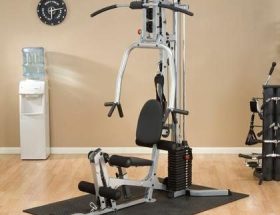Compression clothing has become increasingly popular among athletes in recent years. From professional athletes to weekend warriors, many athletes swear by the benefits of wearing compression garments during training and competition. But what is the science behind compression clothing? How does it work, and does it really improve athletic performance? In this article, we will delve into the science behind compression clothing and explore its potential benefits for athletes.
How Compression Clothing Works
Compression clothing is designed to fit tightly against the skin and apply graduated pressure to the muscles. This pressure helps to improve blood circulation, enhance oxygen delivery to muscles, and remove metabolic waste, such as lactic acid, more efficiently. By improving blood flow, compression clothing can aid in reducing muscle soreness and fatigue, leading to faster recovery.
Compression garments are typically made of stretchy fabrics that can provide a certain level of compression. These fabrics are engineered to apply the highest level of pressure at the extremities and gradually decrease the pressure as they move up the body. This graduated compression helps to facilitate venous return, pushing deoxygenated blood back to the heart, and stimulates better oxygenation of muscles.
The Benefits of Compression Clothing
Enhanced Performance
Several studies have suggested that wearing compression clothing during exercise can have a positive impact on athletic performance. The improved blood flow and oxygen delivery to muscles can enhance performance by reducing the buildup of lactic acid, delaying the onset of fatigue, and improving muscle efficiency. Additionally, compression clothing provides a sense of support and stability to the muscles, potentially improving proprioception and overall movement mechanics.
Quicker Recovery
One of the primary benefits of compression clothing is its ability to expedite the recovery process. The enhanced circulation helps to flush out metabolic waste from the muscles, reducing inflammation and muscle soreness. The compression also helps to stabilize and support the muscles, reducing swelling and preventing excessive movement that may hinder the healing process. Faster recovery allows athletes to train more frequently and at higher intensities, leading to improved performance over time.
Injury Prevention
Compression clothing can also aid in injury prevention. The compression provides added support to the muscles and joints, decreasing muscle oscillation and reducing the risk of muscle damage and fatigue. Additionally, the tight fit of compression garments can provide a proprioceptive feedback, enhancing body awareness and reducing the chance of joint misalignment or poor movement mechanics that may lead to injuries.
Temperature Regulation
Some compression clothing is designed with advanced moisture-wicking properties, aiding in temperature regulation during exercise. These garments can effectively manage perspiration by pulling moisture away from the skin, allowing it to evaporate more easily. By keeping the body cool and dry, compression clothing can prevent overheating and maintain optimal performance levels, particularly in hot and humid conditions.
Conclusion
Compression clothing has gained significant popularity in the sports industry, and for good reason. The science behind compression clothing points to its potential benefits in improving athletic performance, expediting recovery, preventing injuries, and aiding in temperature regulation. Whether you are a professional athlete or a recreational enthusiast, incorporating compression clothing into your training regimen may offer you a competitive edge and help you reach your fitness goals.








